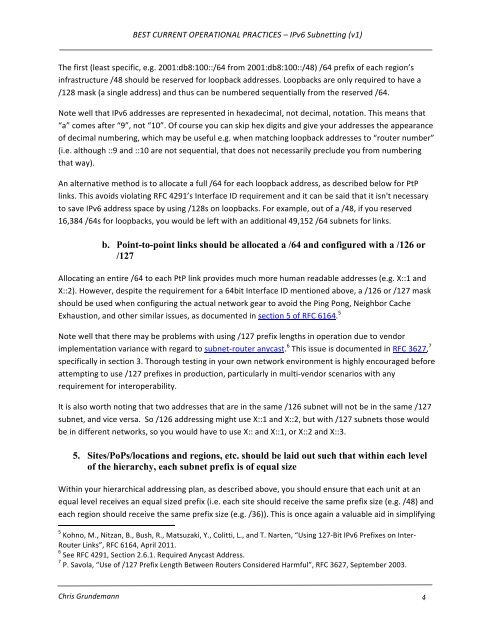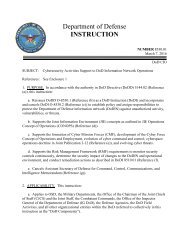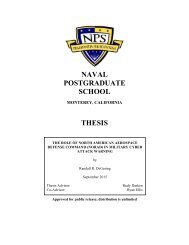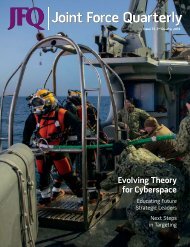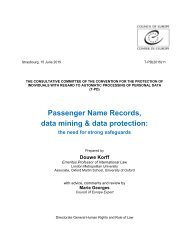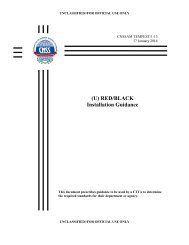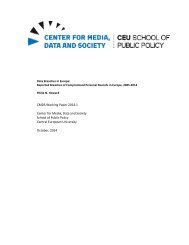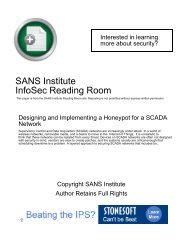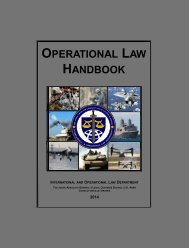BCOP-IPv6_Subnetting
BCOP-IPv6_Subnetting
BCOP-IPv6_Subnetting
You also want an ePaper? Increase the reach of your titles
YUMPU automatically turns print PDFs into web optimized ePapers that Google loves.
BEST CURRENT OPERATIONAL PRACTICES – <strong>IPv6</strong> <strong>Subnetting</strong> (v1) <br />
The first (least specific, e.g. 2001:db8:100::/64 from 2001:db8:100::/48) /64 prefix of each region’s <br />
infrastructure /48 should be reserved for loopback addresses. Loopbacks are only required to have a <br />
/128 mask (a single address) and thus can be numbered sequentially from the reserved /64. <br />
Note well that <strong>IPv6</strong> addresses are represented in hexadecimal, not decimal, notation. This means that <br />
“a” comes after “9”, not “10”. Of course you can skip hex digits and give your addresses the appearance <br />
of decimal numbering, which may be useful e.g. when matching loopback addresses to “router number” <br />
(i.e. although ::9 and ::10 are not sequential, that does not necessarily preclude you from numbering <br />
that way). <br />
An alternative method is to allocate a full /64 for each loopback address, as described below for PtP <br />
links. This avoids violating RFC 4291’s Interface ID requirement and it can be said that it isn't necessary <br />
to save <strong>IPv6</strong> address space by using /128s on loopbacks. For example, out of a /48, if you reserved <br />
16,384 /64s for loopbacks, you would be left with an additional 49,152 /64 subnets for links. <br />
b. Point-to-point links should be allocated a /64 and configured with a /126 or<br />
/127<br />
Allocating an entire /64 to each PtP link provides much more human readable addresses (e.g. X::1 and <br />
X::2). However, despite the requirement for a 64bit Interface ID mentioned above, a /126 or /127 mask <br />
should be used when configuring the actual network gear to avoid the Ping Pong, Neighbor Cache <br />
Exhaustion, and other similar issues, as documented in section 5 of RFC 6164. 5<br />
Note well that there may be problems with using /127 prefix lengths in operation due to vendor <br />
implementation variance with regard to subnet-‐router anycast. 6 This issue is documented in RFC 3627, 7<br />
specifically in section 3. Thorough testing in your own network environment is highly encouraged before <br />
attempting to use /127 prefixes in production, particularly in multi-‐vendor scenarios with any <br />
requirement for interoperability. <br />
It is also worth noting that two addresses that are in the same /126 subnet will not be in the same /127 <br />
subnet, and vice versa. So /126 addressing might use X::1 and X::2, but with /127 subnets those would <br />
be in different networks, so you would have to use X:: and X::1, or X::2 and X::3. <br />
5. Sites/PoPs/locations and regions, etc. should be laid out such that within each level<br />
of the hierarchy, each subnet prefix is of equal size<br />
Within your hierarchical addressing plan, as described above, you should ensure that each unit at an <br />
equal level receives an equal sized prefix (i.e. each site should receive the same prefix size (e.g. /48) and <br />
each region should receive the same prefix size (e.g. /36)). This is once again a valuable aid in simplifying <br />
5 Kohno, M., Nitzan, B., Bush, R., Matsuzaki, Y., Colitti, L., and T. Narten, “Using 127-‐Bit <strong>IPv6</strong> Prefixes on Inter-‐<br />
Router Links”, RFC 6164, April 2011. <br />
6 See RFC 4291, Section 2.6.1. Required Anycast Address. <br />
7 P. Savola, “Use of /127 Prefix Length Between Routers Considered Harmful”, RFC 3627, September 2003. <br />
Chris Grundemann <br />
4


